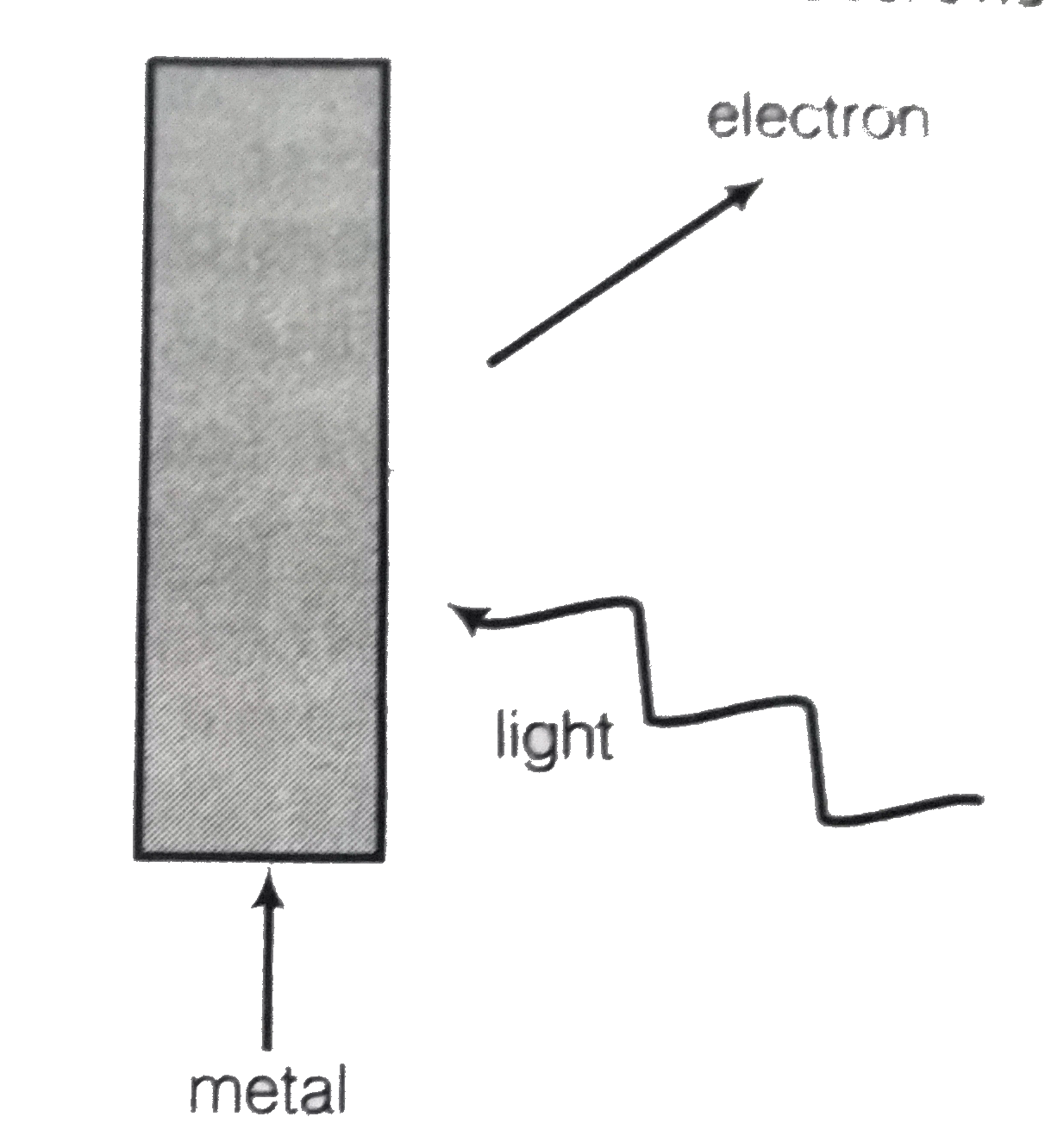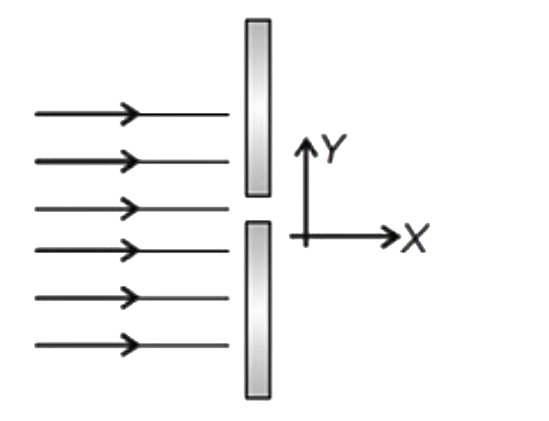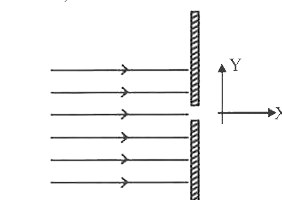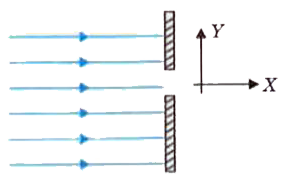Consider figure for photoemission. How would you reconcile with momentum-conservatin? Note light (photons) have momentum in a different direction than the emitted electrons.

When a photon interacts with an atom, then its momentum is transferred to the electrons as well as to the nucleus . If we consider the momentum imparted to the nucleus also then, momentum conservation be side to be applicable here also.
Topper's Solved these Questions
- DUAL NATURE OF RADIATION AND MATTER BOOK - MODERN PUBLICATIONCHAPTER - DUAL NATURE OF RADIATION AND MATTER EXERCISE - Higher Order Thinking Skills & Advanced Level (QUESTIONS WITH ANSWERS)
8 Videos
- DUAL NATURE OF RADIATION AND MATTER BOOK - MODERN PUBLICATIONCHAPTER - DUAL NATURE OF RADIATION AND MATTER EXERCISE - Revision Exercises (Very Short Answer Questions)
45 Videos
- DUAL NATURE OF RADIATION AND MATTER BOOK - MODERN PUBLICATIONCHAPTER - DUAL NATURE OF RADIATION AND MATTER EXERCISE - NCERT FILE (NCERT - Exemplar Problems - Subjective Questions (Very Short Answer Type Questions))
5 Videos
- CURRENT ELECTRICITYBOOK - MODERN PUBLICATIONCHAPTER - CURRENT ELECTRICITYEXERCISE - Chapter Practice Test
15 Videos
- ELECTRIC CHARGES AND FIELDS BOOK - MODERN PUBLICATIONCHAPTER - ELECTRIC CHARGES AND FIELDS EXERCISE - Chapter Practice Test
15 Videos
Similar Questions
Consider figure for photoemission. How would you reconcile with momentum-conservation? Note light (photons) have momentum in a different direction than the emitted electrons.

View SolutionA parallel beam of electrons , travelling in x - direction , falls on a slit of width d (see the figure) . If after passing the slit, an electron acquires momentum Py in the y direction, then for a majority of electrons passing through the slit , (h is Planck's constant)

View Solution
Knowledge Check
A parallel beam of electrons travelling in x-direction falls on a slit of width d (see figure). If after passing the slit, an electron acquires momentum py in the y-direction then for a majority of electrons passing through the slit (h is Planck's constant):
 A∣∣Py∣∣d>hB∣∣Py∣∣d<hC∣∣Py∣∣d=hD∣∣Py∣∣d>>h
A∣∣Py∣∣d>hB∣∣Py∣∣d<hC∣∣Py∣∣d=hD∣∣Py∣∣d>>hA parallel beam of electrons travelling in X-direction falls on a slit of width d (see figure). If after passing the slit, an electron acquires momentum py in the Y-direction, then for a majority of electrons passing through the slit (h is Planck's constant):
 A∣∣py∣∣d=hB∣∣py∣∣d>hC∣∣py∣∣d<hD∣∣py∣∣d>>h
A∣∣py∣∣d=hB∣∣py∣∣d>hC∣∣py∣∣d<hD∣∣py∣∣d>>hThe momentum of a photon having energy equal to the rest energy of an electron is
AzeroB2.73×10−22kgms−1C1.99×10−24kgms−1Dinfinite
Statement−1: When white light (which contains all wavelengths) is passed through atomic hydrogen gas then transmitted beam is not having some wavelengths whose photons energy is equal to difference of two energy levels.This is due to absorbtion of photon by atom.The resulting excited atom then re-radiate photons in random direction with only a few in the same direction as of original beam of white light. Statement−2: Momentum remains conserved during absorption or emission of photon by atomic hydrogen
View SolutionA Bohr hydrogen atom at rest in free space undergoes a transition from the energy level n=2 to n=1, emitting a photon in the positive x direction. Since this photon has momentum, the atom must recoil in the negative x direction. Find the recoil velocity of the atom.
View SolutionPhoton having wavelength 12.4nm was allowed to strike a metal plate having work function 25eV.Calculate the-
(a) Maximum kinetic energy of photoelectrons emitted in eV.
(b) Wavelength of electron with maximum kinetic energy in A∘.
(c ) Calculate the uncertainity in wavelength of emitted electron, if the uncertainity in the momentum is 6.62×1020kgm/sec
View SolutionStatement -1: In process of photoelectric emission , all emitted electrons donot have sam Kinetic energy
Statement-2: If radiation falling on photosensitive surface of a metal consits of different wavelength, then energy acquired by electrons absorbing photons of different wavelength shall be different.
View SolutionIn an experiment on photoelectric effect, a photon is incident on an electron from one direction and the photoelectron is emitted almost in the opposite direction. Does this violate conservation of momentum ?
View Solution
